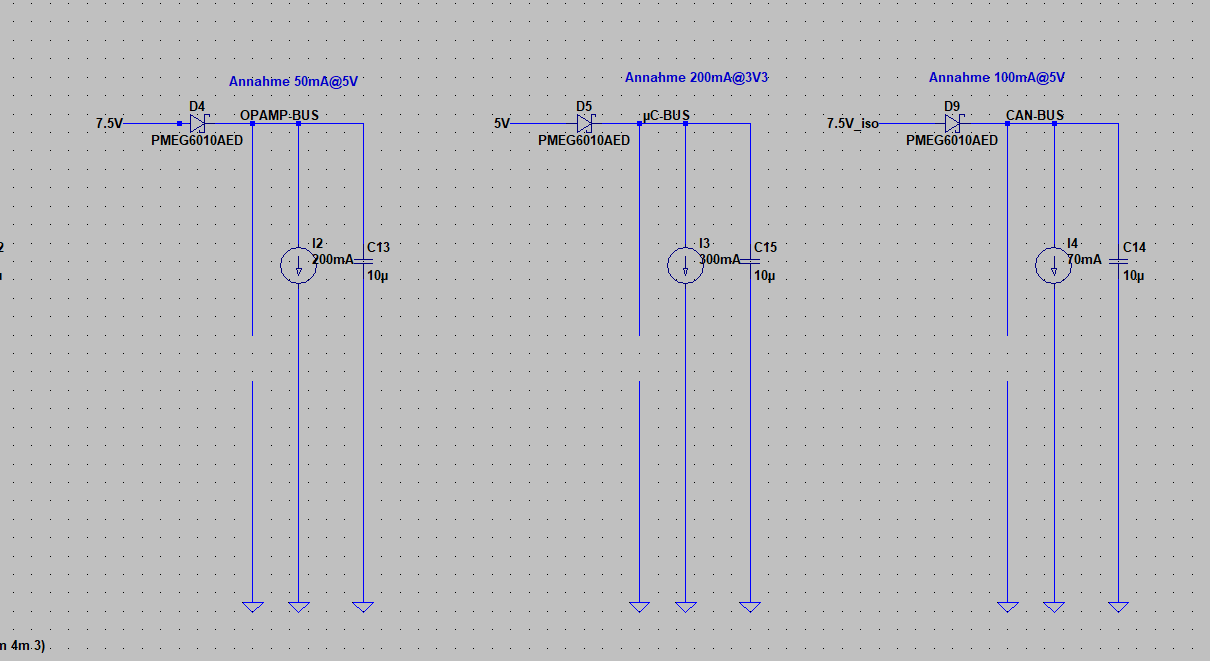Other Parts Discussed in Thread: LM3481, LM3478
Hello,
I implemented a flyback converter solution with the lm3481 and have it already running. Due to new design changes I took a deeper look into the simulation which I did in ltspice.
Now when I have a change in loadpower(at 1ms, 5ms, 9ms etc...), in this case on my powerbridge rail I see the output voltages drop. Why don't they start to rise again?
I tried to reduce the feedback voltage divider which reduces the total drop, but still it won't rise. When I reduced the primary inductance L1 to ~1µH it started rising slowly.
Why is that and how can I change it without further reducing L1?
Best regards
Norbert







